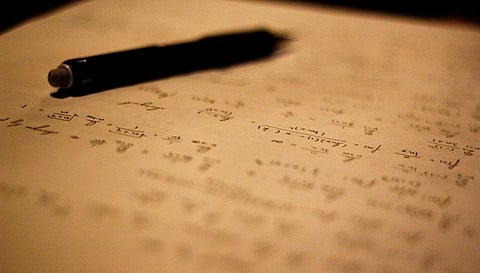
- Home
- न्यूजग्राम
- India
- World
- Politics
- Entertainment
- Culture
- Lifestyle
- Economy
- Sports
- Sp. Coverage
- Misc.
- NewsGram Exclusive
- Jobs / Internships

Oxford, September 16, 2017 : The eminent Indian mathematician Brahmagupta has been credited globally for writing the first-ever text that described zero as a number in 628 AD. According to Professor Marcus Du Sautoy of the University of Oxford, the creation of zero has to be credited as the "greatest breakthrough" in mathematics. But carbon dating of an ancient text has pushed the story of zero's origin back by 500 years!
Scientists have now traced the origin of zero to the Bakhshali manuscripts that date from the 3rd or the 4th century- over 500 years older than previously thought, which makes it the world's oldest recorded derivation of the zero that is now used by people world over.
The new search results stemming from the manuscript assert an earlier reference to the symbol of zero that is considerably older than the previously known inscription on a temple in Gwalior, India dating the ninth-century.
We present six astounding facts about the symbol '0',
However, the Bakhshali manuscript featured the first 'dot' symbol that eventually transformed into the '0' symbol with the hollow centre that is used today.
The development of zero dramatically changed the field of mathematics, supplementing an implausible range of further work, including the notion of infinity, calculus, digital technology and also some of the larger questions of cosmology about the beginning of the Universe and how its existence might disappear in future.
According to a report by The Guardian, the head of the Bodleian Library, Richard Ovenden was quoted as saying that these astounding research results highlight the rich and ancient scientific tradition of South Asia and also draw attention to the Western bias that often left the contributions of these scholars overlooked and ignored.
